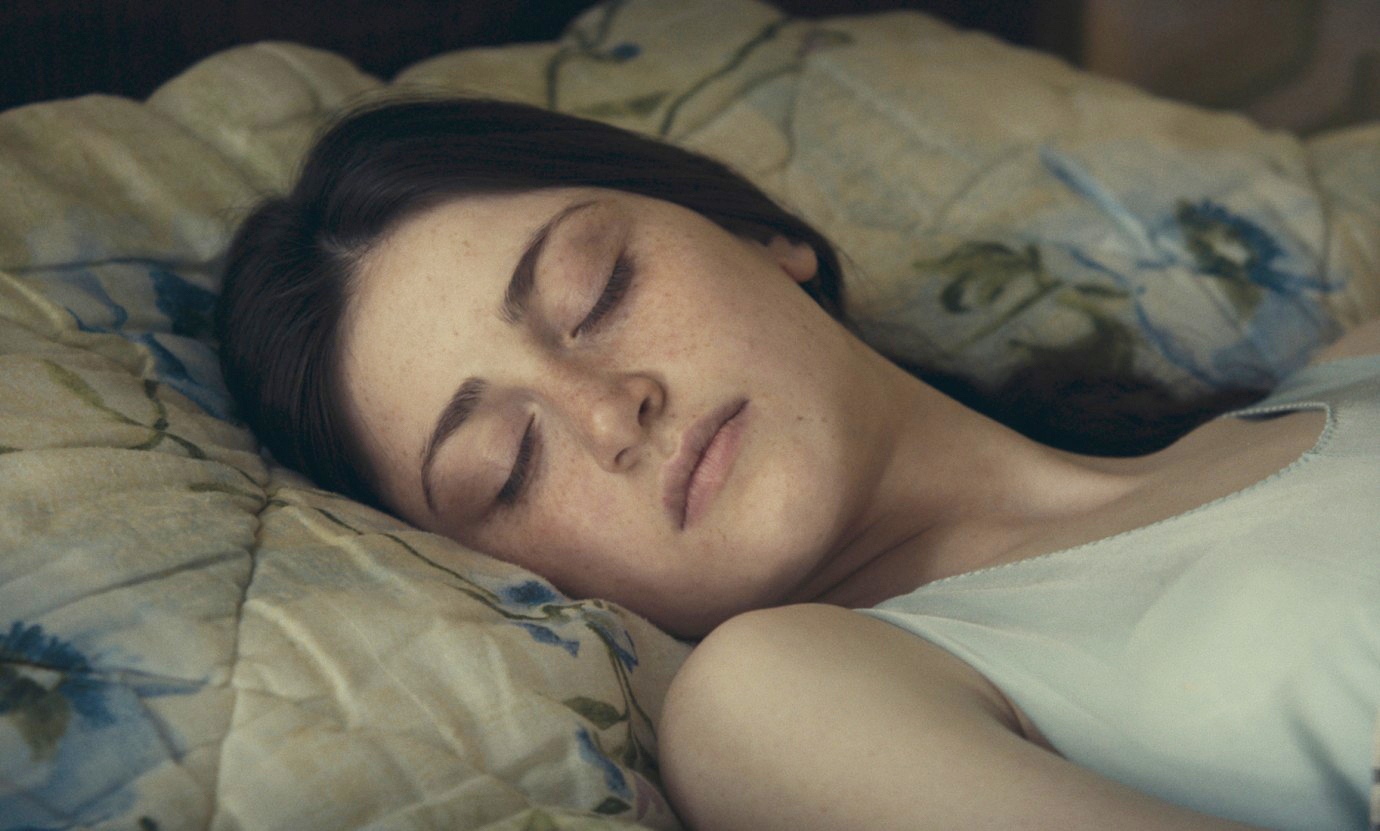Primal Love Antidote
What Do We See When We Look at the Sky (Ras vkhedavt, rodesac cas vukurebt?, 2021), the second feature film by Georgian Aleksandre Koberidze, was part of the International Competition at the 71st Berlinale and won the respective FIPRESCI prize.
This poetic comedy of sorts tells a minimal story with a fantastic/absurdist foundation. Lisa and Giorgi fall in love after meeting by chance just a couple of times. They arrange to meet on another occasion, but a supernatural force casts the evil eye on them. Unable to prevent the curse from coming true, four friends warn Lisa of what is about to happen. These friends are a bush, a surveillance camera, a drainpipe, and the wind. When the two characters wake up, before the meeting takes place and without even knowing each other’s names, both of them have changed their appearances and, therefore, will no longer be able to recognize each other. The spell also implies that each will be deprived of a main talent, so that they will have to look for some unskilled job to survive.
“Don’t be afraid, spells are old-fashioned,” a (human) friend advises Lisa. But the film assumes a universe in which magic acts independently of its credibility, as if it were a natural force. The comment helps to highlight the explicit artificiality of the premise, the playful construction that the film assumes.
Giorgi and Lisa’s adventures as they get used to and cope with their new situation are told in a very peculiar style, which includes a voice-over that accentuates the “children’s story” mode, weaving in with commentary; the acting is more or less detached, without emphasis on the expression of feelings, which contributes to the quirky sense of humour; there are many detail shots that often function as synecdoches for broader narrative data. This tale of hoodwinked love is the skeleton of the film. The flesh, the substance, is everyday life in Kutaisi, a Georgian city of just over 100,000 inhabitants. The camera observes it with delight: its culinary traditions, bars, meetings, and passion for soccer (especially for Messi and the Argentinian national team); its stray dogs; the soundscape full of birds, sparse traffic, and light human bustle. There are several poetic interludes bathed in beautiful music, showing, for example, seated women’s necks in a park at dusk, children playing football on a small pitch, a girl mastering the ball, the brown water of the river Rioni, a rhythmic-plastic montage of fragments of bodies, and images of a football match projected on stones. Everywhere we see conversations shot from afar, without synchronous sound, in images that reveal aspects of their idiosyncrasies and cultural gestures. It is as if the animist principle that bestows wisdom and the power to communicate through objects such as a bush or a drain permeated the film itself. The camera observes every face, every corner, every flash of light, as if they were full of spirit and life, far beyond their iconicity or the eventual harmony of their imagery.
This attitude, in turn, is connected to the appreciation of the filmic devices themselves: there is an important meta-cinematic line. It is the cinema that will break the spell, as if cinema, as a tool for seeing, were one of the possible doors to a wiser perception of the world. The love of cinema surfaces: the movie theater, the face of the elderly man who develops the 16 mm film, the excitement at the film set, the beauty of the couples filmed. But also, this love of cinema is implied in the care with which What Do We See When We Look at the Sky? is made, the sensual enjoyment of framing, light, sound, rhythm, editing, and other formal patterns, and the possibility of constructing our own small utopias, catharses, or fantasies through cinema; of processing, from mise-en-scène to post-production, our everyday spells.
The camerawork is exquisite and intelligent: one need only look at the fixed framing in the conservatory waiting room, which has an empty, luminous area (a wall) and a dark one (the rectangle corresponding to an unlit corridor). The small actions that take place in front of the bright area, naturally highlighted, alternate with others in the corridor, which captures our gaze every time a door opens and illuminates that area. Carefully choreographed movements play different variations in this situation. The sound designer is a music composer (and it shows). It is Giorgi Koberidze, who also writes some delicate and sensitive pieces of music of rare instrumental virtuosity.
The voice-over, which seems to identify with the author of the film, comments on some of the problems of the surrounding world. Aware of our global situation of violence, it assumes that on seeing this film, viewers in the future will not be able to understand how some people could lead such a peaceful life or how someone could make a film like this. The ethical dilemma remains unsolved. The film is charged with a kind of primal love: for people, for things, for imagination, for images. And it is made with such conviction that, I suppose, the scales tip toward taking it not as an alienated refuge from the great problems of the world (although it may very well work as such) but as a key to a possible antidote.
Guilherme de Alencar Pinto
© FIPRESCI 2021
Edited by Robert Horton

